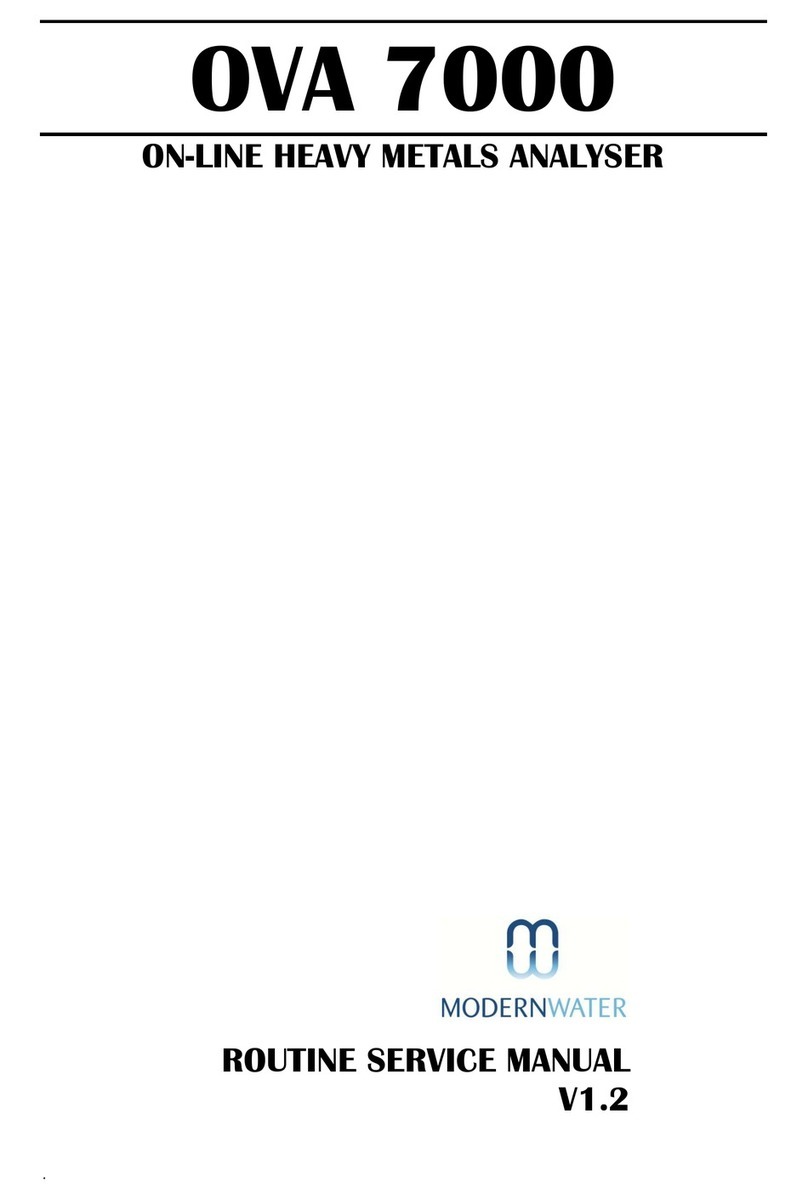
OVA7000 Routine Service Manual V1.5 9
2.2 Priming Reagent Lines
Before OVA7000 operation, all tubing lines should be full of fresh reagent and free of air bubbles. To ensure
this, the lines need to be primed.
Prime reagent lines.
1. Ensure all reagent lines are sitting in full reagent containers, the ends have tube weights and the tubes
are fully inserted into the bottles.
2. Select the Manual tab on the Run screen.
3. Select the drain pump for each cell and leave it running to drain the cell and to prevent overflow. Click
on the pump icon for each pump to be primed. When on, the pump will turn and the pump icon will
change from red to green. All necessary pumps can be primed simultaneously if required, except for the
rinse which has a much higher flow rate and so should be done by itself.
4. When a line is full of reagent & free of air bubbles, click its icon again to turn the pump off.
2.3 Initiating OVA7000 Operation
If the OVA7000 has been inactive for a significant time, the weekly (see section 3) and or 3-monthly
maintenance procedures (see OVA7000 Operation Manual) will need to be carried out before initiation.
Caution: A reference electrode that is not filled with reference electrolyte or has significant air bubbles may
cause irreversible damage to the working electrode when the Run page is entered and working electrode is
connected.
Initiate OVA7000 operation.
1. Click on the green Run Schedule button in the middle of the Run Screen.
2. If the schedule has a Plate script configured then the button will split into a blue Plate First button and a
green Run Schedule button. Select either to begin automatic operation.
The OVA7000 will now operate automatically in accordance with the method scripts activated by the Scheduling
feature of the OVA7000 software. These are described in the OVA7000 Operation Manual as they are not
routinely modified and should only be modified by suitably trained personnel.
The OVA7000dual only requires that the Run Schedule button is pressed on the master side. The master’s
schedule includes signaling scripts that will initiate a Standard or Sample run on the slave side when appropriate.
If the master’s schedule is restarted while the slave is still operating, then the slave will abandon its prior
operation when it is signaled to run a new script by the master.
2.4 Stopping OVA7000 Operation
Stop OVA7000 operation.
1. Click the Stop button in the Run screen. All activity will stop and a Drain all Cells button will appear.
2. If desired, both Analytic and Prep cells can be drained by clicking the Drain all Cells button.
3. Exit the Run screen to the Main screen by clicking the Main Menu button.
The OVA7000dual’s slave side will continue its current Standard or Sample script after the master has been
stopped. If you wish to stop the slave side entirely then you will need to do so by accessing the slave side’s own
control screen (open a second VNC window or from the Set Top Box by pressing the Select VGA button).





























